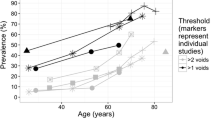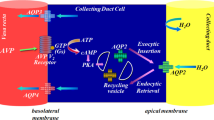Abstracts
Nocturia is a used to define the condition in which the individual has to wake at night one or more times to void, which was frequently complained by more than 60% patients with PD. The pathophysiological mechanisms causing nocturia in patients with PD remains poorly understood. Decreased bladder capacity, nocturnal polyuria, circadian rhythm disturbances, some living habits, and comorbidities are thought to be contributing to nocturia in patients with PD. For the diagnosis of nocturia in PD, detailed medical history and urinary diary are needed. More importantly, ultrasonography and urodynamics also help. Nocturia in PD patients has detrimental impact on patients’ quality of life; therefore, multiple disciplinary managements are needed to ameliorate symptoms. These include pharmacological management, lifestyle change, and urology referral when necessary. Medication for treating nocturia in PD includes dopamine agonists, antimuscarinic agents, desmopressin, and melatonin. Moreover, intermittent catheterization, botulinum toxin injection, deep brain stimulation, and neuromodulation are also efficient for the management of nocturia in PD.
Access this chapter
Tax calculation will be finalised at checkout
Purchases are for personal use only
Similar content being viewed by others
References
Blackett H, Walker R, Wood B. Urinary dysfunction in Parkinson’s disease : a review. Parkinsonism Relat Disord. 2009;15(2):81–7.
Madan A, Ray S, Burdick D, Agarwal P. Management of lower urinary tract symptoms in Parkinson’s disease in the neurology clinic. Int J Neurosci. 2017;127(12):1136–49.
Van KP, Abrams P, Chaikin D, Donovan J, Fonda D, Jackson S, et al. The standardisation of terminology in nocturia : report from the Standardisation Sub-committee of the International Continence Society. BMJ Int. 2002;183(2):179–83.
Rana AQ, Vaid H, Akhter MR, Awan NY, Fattah A, Cader MH, et al. Prevalence of nocturia in Parkinson’s disease patients from various ethnicities. Neurol Res. 2014;36(3):234–8.
Rana AQ, Paul DA, Qureshi AM, Ghazi A, Alenezi S, Rana MA, et al. Association between nocturia and anxiety in Parkinson’s disease. Neurol Res. 2015;37(7):563–7.
Yeo L, Singh R, Gundeti M. Urinary tract dysfunction in Parkinson’s disease : a review. Int Urol Nephrol. 2012;44(2):415–24.
Sakakibara R, Panicker J, Finazzi-agro E, Iacovelli V, Bruschini H. A guideline for the management of bladder dysfunction in Parkinson’s disease and other gait disorders. Neurourol Urodyn. 2016;35(5):551–63.
Batla A, Phe V, De ML, Panicker JN. Nocturia in Parkinson’s disease : why does it occur and how to manage ? Mov Disord Clin Pract. 2016;3(5):443–51.
Sakakibara R, Tateno F, Nagao T, Yamamoto T, Uchiyama T, Yamanishi T, et al. Bladder function of patients with Parkinson’s disease. Int J Urol. 2014;21(7):638–46.
Easton A, Ph D, Meerlo P, Ph D, Bergmann B, Ph D, et al. The suprachiasmatic nucleus regulates sleep timing and amount in mice. Sleep. 2004;27(7):1307–18.
Kudo T, Loh DH, Truong D, Wu Y, Colwell CS. Circadian dysfunction in a mouse model of Parkinson’s disease. Exp Neurol. 2011;232(1):66–75.
Buser N, Ivic S, Kessler TM, Kessels AGH, Bachmann LM. Efficacy and adverse events of antimuscarinics for treating overactive bladder : network meta-analyses. Eur Urol. 2012;62(6):1040–60.
Matsuta Y, Yusup A, Tanase K, Ishida H, Akino H. Melatonin increases bladder capacity via GABAergic system and decreases urine volume in rats. J Urol. 2010;184(1):386–91.
Panicker JN, Fowler CJ, Kessler TM. Lower urinary tract dysfunction in the neurological patient : clinical assessment and management. Lancet Neurol. 2015;14(7):720–32.
Kuno S, Mizuta E, Yamasaki S, Araki I. Effects of pergolide on nocturia in Parkinson’s disease: three female cases selected from over 400 patients. Parkinsonism Relat Disord. 2004;10(3):181–7.
Rosa-grilo M, Qamar MA, Chaudhuri KR. Rotigotine transdermal patch and sleep in Parkinson’s disease : where are we now? NPJ Parkinson’s Dis. 2017;3:28.
Suchowersky O, Furtado S, Rohs G. Beneficial effect of intranasal desmopressin for nocturnal polyuria in Parkinson’s disease. Mov Disord. 1995;10(3):337–40.
Marinkovic SP, Gillen LM, Stanton SL. Managing nocturia. BMJ. 2004;328(7447):1063–6.
Giannantoni A, Rossi A, Mearini E, Del ZM, Porena M, Berardelli A. Botulinum toxin A for overactive bladder and detrusor muscle overactivity in patients with Parkinson’s disease and multiple system atrophy. J Urol. 2009;182(4):1453–7.
Giannantoni A, Conte A, Proietti S, Giovannozzi S, Rossi A, Fabbrini G, et al. Botulinum toxin type A in patients with Parkinson’s disease and refractory overactive bladder. J Urol. 2011;186(3):960–4.
Winge K, Nielsen KK. Bladder dysfunction in advanced Parkinson’s disease. Neurourol Urodyn. 2012;31(8):1279–83.
Witte LP, Odekerken VJJ, Boel JA, Schuurman PR, Gerbrandy-Schreuders LC, de Bie RMA, et al. Does deep brain stimulation improve lower urinary tract symptoms in Parkinson’s disease? Neurourol Urodyn. 2018;37(1):354–9.
Booth J, Lawrence M. The effectiveness of transcutaneous tibial nerve stimulation (TTNS) for adults with overactive bladder syndrome : a systematic review. Neurourol Urodyn. 2018;37(2):528–41.
Carolina M, Carlos P, Levi A, Martins R, Anelyssa C, Lucio A. Transcutaneous tibial nerve stimulation in the treatment of lower urinary tract symptoms and its impact on health-related quality of life in patients with Parkinson disease: a randomized controlled trial. J Wound Ostomy Cont Nurs. 2015;42(1):94–9.
Wallace PA, Lane FL, Noblett KL. Sacral nerve neuromodulation in patients with underlying neurologic disease. Am J Obstet Gynecol. 2007;197(1):96.e1–5.
Griffiths DJ, Mccracken PN, Harrison GM, Ann Gormley E. Relationship of fluid intake to voluntary micturition and urinary incontinence in geriatric patients. Neurourol Urodyn. 1993;12(1):1–7.
Weiss JP, Blaivas JG. Nocturia. J Urol. 2000;163(1):5–12.
Batla A, Tayim N, Pakzad M, Panicker JN. Treatment options for urogenital dysfunction in Parkinson’s disease. Curr Treat Options Neurol. 2016;18(10):45.
Author information
Authors and Affiliations
Editor information
Editors and Affiliations
Rights and permissions
Copyright information
© 2020 Springer Nature Singapore Pte Ltd.
About this chapter
Cite this chapter
Gu, Xj., Cao, B., Shang, Hf. (2020). Nocturia. In: Liu, CF. (eds) Sleep Disorders in Parkinson’s Disease. Springer, Singapore. https://doi.org/10.1007/978-981-15-2481-3_5
Download citation
DOI: https://doi.org/10.1007/978-981-15-2481-3_5
Published:
Publisher Name: Springer, Singapore
Print ISBN: 978-981-15-2480-6
Online ISBN: 978-981-15-2481-3
eBook Packages: MedicineMedicine (R0)




